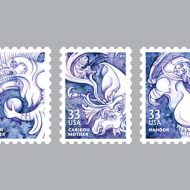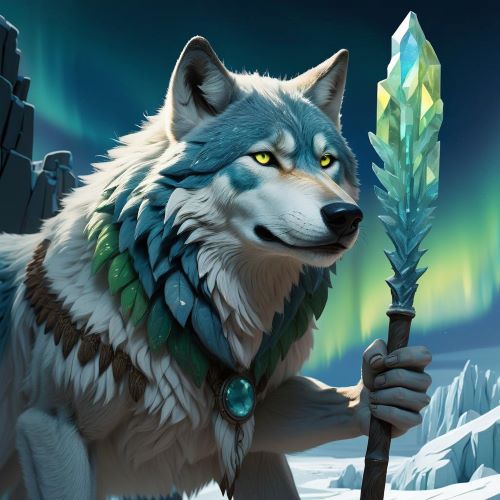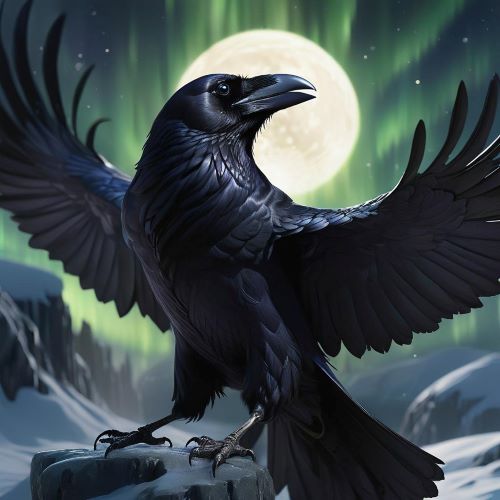Nanook : The Polar Bear God
Listen
At a glance
| Description | |
|---|---|
| Origin | Inuit Mythology |
| Classification | Gods |
| Family Members | N/A |
| Region | Greenland, Northern Canada, Alaska |
| Associated With | Polar Bears , Hunting |
Nanook
Introduction
In the Arctic’s unforgiving landscapes, the Inuit have woven a rich tapestry of mythology centered around Nanook, the master of polar bears and guardian of the frozen realms. Revered for his strength and wisdom, Nanook symbolizes the profound connection between the Inuit and their natural environment. As a spiritual leader, Nanook not only embodies the qualities necessary for survival in this harsh terrain but also represents the delicate balance between humans and nature in Inuit belief. His role extends beyond myth, influencing how the Inuit perceive and interact with their surroundings, particularly in hunting traditions where his blessings are sought and respected.
Physical Traits
Nanook, whose name means “polar bear” in Inuktitut, is frequently portrayed as a mighty polar bear, symbolizing the strength and endurance essential for survival in the Arctic. According to legend, Nanook’s ability to appear human-like, attributed to polar bear traits like long fingers and upright standing, led some Inuit tribes to believe they were bear descendants. Described as the largest terrestrial predator on Earth, Nanook’s fur is likened to the Arctic snow, providing flawless camouflage in the frozen landscape.
Legends vary in depicting him as an immense bear overshadowing even the largest known bears, or sometimes with a more human-like form, blurring distinctions between man and animal. This ambiguity reflects the deep respect the Inuit hold for polar bears, viewing them as nearly human due to their intelligence and strength. Nanook embodies the majestic strength and grace of the polar bear, revered in Inuit tradition as a towering deity with shimmering white fur that blends into the Arctic’s snow-covered expanses. His piercing eyes are said to reflect timeless wisdom, while his robust limbs and agile movements symbolize both ferocity in battle and peace in solitude. Nanook’s appearance invokes both fear and reverence among the Inuit, solidifying his role as a primal force of nature.
Family
In Inuit mythology, Nanook is not just an individual deity but an integral part of the pantheon’s familial structure. Revered as a father figure, Nanook is said to have many cubs, each inheriting his strength and resilience. His companion, Sedna, goddess of the sea and marine life, complements Nanook’s domain over land and ice by ruling the ocean depths. Together, they embody the harmonious balance of the Arctic environment, where land and sea intertwine in a crucial interplay of survival and sustenance. While specific details about Nanook’s family are sparse in traditional lore, he is universally recognized as the guardian spirit of polar bears, overseeing and protecting these majestic creatures.
Some accounts mention Nanook having a wife, often depicted as a beautiful white she-bear embodying nurturing and protective qualities akin to his own power. According to Inuit belief, honoring Nanook and observing proper hunting rituals ensured a sustainable supply of bears for food and clothing, reflecting their deep respect for the natural world.
Other Names
Nanook, stemming from the Inuktitut term for “polar bear,” is known by various names across Inuit communities, reflecting regional dialects and cultural nuances. In different contexts, he is referred to as Kiviuq, emphasizing his role as provider and guardian of the hunt, Agglok, highlighting shared physical traits with humans and bears, particularly the characteristic of being “the bearded one,” and Qaquqturjuk, signifying his immense size and power as “the great one.” These names illustrate Nanook’s versatility within Inuit mythology, where oral traditions shape his character and significance. Additionally, Nanook is recognized as Nanuq or Nanu in different traditions, underlining his deep association with polar bears across diverse Arctic regions.
Powers and Abilities
Nanook, a powerful deity in Inuit mythology, exerts profound influence over the Arctic environment through various domains. Known as the master of bears, Nanook controls the movements and availability of bears, crucial for successful hunts where hunters perform rituals and offerings to appease him. Beyond land, Nanook extends his sway over the Arctic seas, believed to calm or stir waters that affect the hunt for seals and walruses. Legends attribute Nanook with control over Arctic weather, where blizzards and storms are seen as expressions of his will or a test for hunters. In the realm of the afterlife, Nanook plays a role in Inuit beliefs, with the souls of hunted bears returning to him, potentially to be reborn or serve as spirit guides.
Hunters maintain a relationship of mutual respect with Nanook, revering him as they harvest bear meat and use fur for warmth, while observing rituals to honor the spirits of slain bears. Nanook’s role as the master of bears encompasses enforcing taboos and rewarding or punishing hunters based on their adherence, reflecting his status as both guardian and provider essential to Inuit spiritual practices and survival traditions in the Arctic.
Modern Day Influence
Nanook’s legacy remains a significant cultural force in modern times, symbolizing the Arctic’s spirit and inspiring artists, authors, and filmmakers alike. In contemporary art and literature, Inuit artists continue to depict Nanook through sculptures, carvings, and paintings, preserving his significance as both a hunter god and a totemic ancestor. The influence of Nanook extends into modern media, notably seen in documentaries such as “Nanook of the North,” which underscores the enduring respect and reverence for wildlife in Inuit culture.
Despite the passage of time and the impact of modernity, Nanook’s profound influence on Inuit identity persists, influencing themes of conservation, environmental stewardship, and the intrinsic connection between humanity and nature. Festivals and ceremonies within Inuit communities further honor Nanook, celebrating ancestral traditions and reaffirming their deep-rooted ties to the Arctic landscape. Through these cultural expressions, Nanook continues to educate and inspire global audiences about the rich mythology and timeless wisdom of Inuit traditions.
Related Images
Frequently Asked Questions
What does Nanook mean?
The word “Nanook” itself directly translates to “polar bear” in Inuktitut, the language spoken by the Inuit people. This meaning reflects the deep connection between Nanook and the majestic creature he embodies. It signifies his role as the master and protector of bears, as well as the awe the Inuit held for these powerful predators.
What is the story of the Nanook?
Nanook, the Inuit bear god, embodies Arctic power. Seen as a giant polar bear or a human-bear hybrid, he controls the hunt, sea, and weather. Hunters perform rituals to appease him, sharing meat and returning bones. These acts ensure continued bounty and respect the life they take. Nanook’s legacy lives on, inspiring artists and reminding us of humanity’s link to nature
Why was Nanook of the North controversial?
“Nanook of the North,” despite being a documentary pioneer, faced criticism. It showcased a staged “real” Inuit family, romanticized their life, and ignored modern influences. Some argue the Inuit participants weren’t fully informed or compensated. This controversy highlights the line between documentary and staged portrayal, sparking discussions about representing indigenous cultures.
Is Nanook a polar bear?
Nanook isn’t a single polar bear, but the Inuit bear god. Pictured as a giant polar bear most often, he represents all bears and their importance. He’s a spirit, not a specific animal, and controls bear populations and hunting success. Some tales even depict him human-like, blurring the lines and highlighting Inuit respect for bears.














